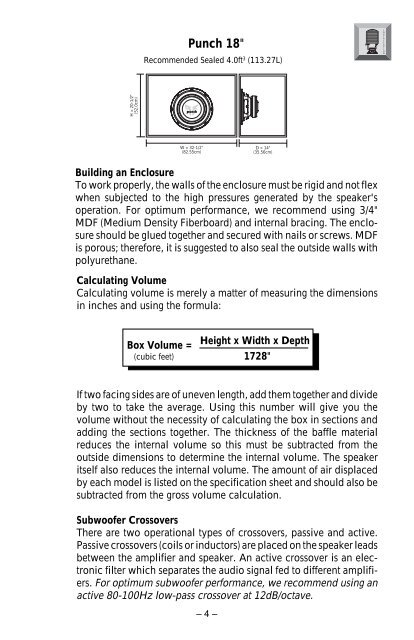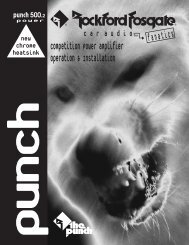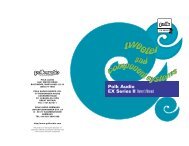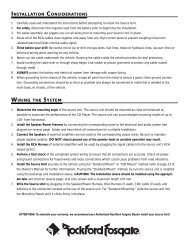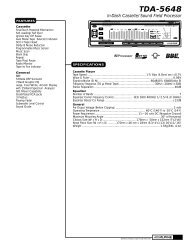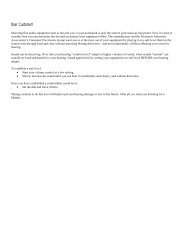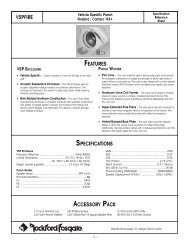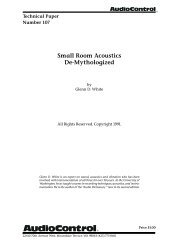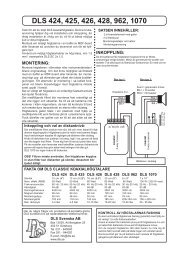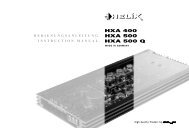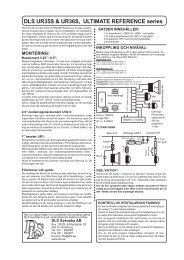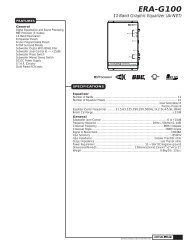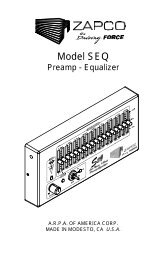⢠RFP Woofers 1996
⢠RFP Woofers 1996
⢠RFP Woofers 1996
Create successful ePaper yourself
Turn your PDF publications into a flip-book with our unique Google optimized e-Paper software.
® ®<br />
Punch 18"<br />
Recommended Sealed 4.0ft 3 (113.27L)<br />
I<br />
N<br />
S<br />
T<br />
A<br />
L<br />
L<br />
A<br />
T<br />
I<br />
O<br />
N<br />
H = 20-1/2"<br />
(52.0cm)<br />
W = 32-1/2"<br />
(82.55cm)<br />
D = 14"<br />
(35.56cm)<br />
Building an Enclosure<br />
To work properly, the walls of the enclosure must be rigid and not flex<br />
when subjected to the high pressures generated by the speaker's<br />
operation. For optimum performance, we recommend using 3/4"<br />
MDF (Medium Density Fiberboard) and internal bracing. The enclosure<br />
should be glued together and secured with nails or screws. MDF<br />
is porous; therefore, it is suggested to also seal the outside walls with<br />
polyurethane.<br />
Calculating Volume<br />
Calculating volume is merely a matter of measuring the dimensions<br />
in inches and using the formula:<br />
Box Volume =<br />
(cubic feet)<br />
Height x Width x Depth<br />
1728"<br />
If two facing sides are of uneven length, add them together and divide<br />
by two to take the average. Using this number will give you the<br />
volume without the necessity of calculating the box in sections and<br />
adding the sections together. The thickness of the baffle material<br />
reduces the internal volume so this must be subtracted from the<br />
outside dimensions to determine the internal volume. The speaker<br />
itself also reduces the internal volume. The amount of air displaced<br />
by each model is listed on the specification sheet and should also be<br />
subtracted from the gross volume calculation.<br />
Subwoofer Crossovers<br />
There are two operational types of crossovers, passive and active.<br />
Passive crossovers (coils or inductors) are placed on the speaker leads<br />
between the amplifier and speaker. An active crossover is an electronic<br />
filter which separates the audio signal fed to different amplifiers.<br />
For optimum subwoofer performance, we recommend using an<br />
active 80-100Hz low-pass crossover at 12dB/octave.<br />
– 4 –


